Tantuni is a highly regional dish from Mersin, a port city on Turkey’s southern Mediterranean coastline. Of humble origins, it’s a simple lamb or steak wrap made with pan-fried meat and lavash bread. Juicy and flavorful, it’s finished with a paprika-spiced pan gravy and lemony tomato salad.
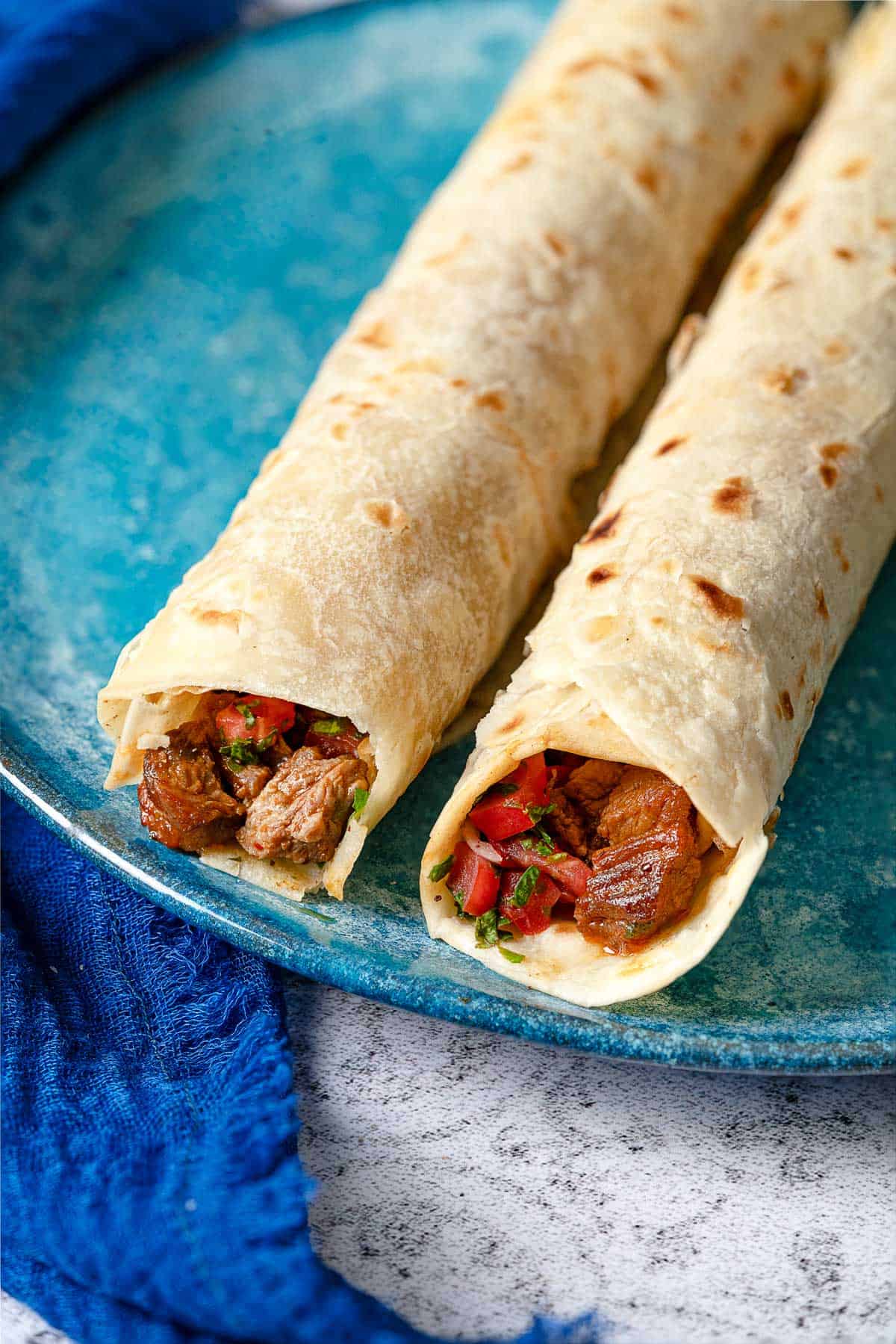
Tantuni is a popular Turkish street food made with beef or lamb. A quick pan gravy is made from the meat’s juices, and fresh lavash bread soaks into the gravy for extra richness. It’s typically rolled into a thin wrap, bent to form a U-shape, and served with a parsley and tomato salad and lemon wedges for squeezing.
I first tried tantuni in Bodrum, a beautiful coastal town in southwestern Turkey. I was on my way to meet my husband, Can’s, family for dinner at a nice fish restaurant right on the water. We were running behind and less than a block away when he shrieked, “TANTUNI!!!” and stopped dead in his tracks.
I believe showing up to dinner full (and late) is on par with hogging the middle armrest on an airplane. But we were in Bodrum, nowhere near Mersin where tantuni is typically found. And Can was near begging. I insisted I would just try one bite.
We ate the first one. Then ordered a second. Can taught me to eat the steak wrap from both sides so the last bite has all the meat and lemony tomato juices. It’s a detail I find heartbreakingly charming to this day.
When we met up with Can’s family, there was already watermelon and feta salad and a glass of chilled raki (a anise-flavored liquor very similar to ouzo) on the table. I walked into the busy kitchen with his dad to pick out our mezzes of the day and whole fish for grilling. I made it all the way through to the dessert: fresh fruit on ice with hot glasses of çay (a Turkish black tea, not unlike Arabic tea with mint).
This was years ago now, and I’ve thought of that perfectly juicy steak wrap often. I’ve experimented with all the many ways to make it at home, eventually finding a nice balance between tradition and a lighter, more weeknight-friendly recipe. Most of all, I’ve learned that if you find yourself abroad with a local, you stop at the food stall that makes their eyes light up and figure the rest out later.
Table of Contents
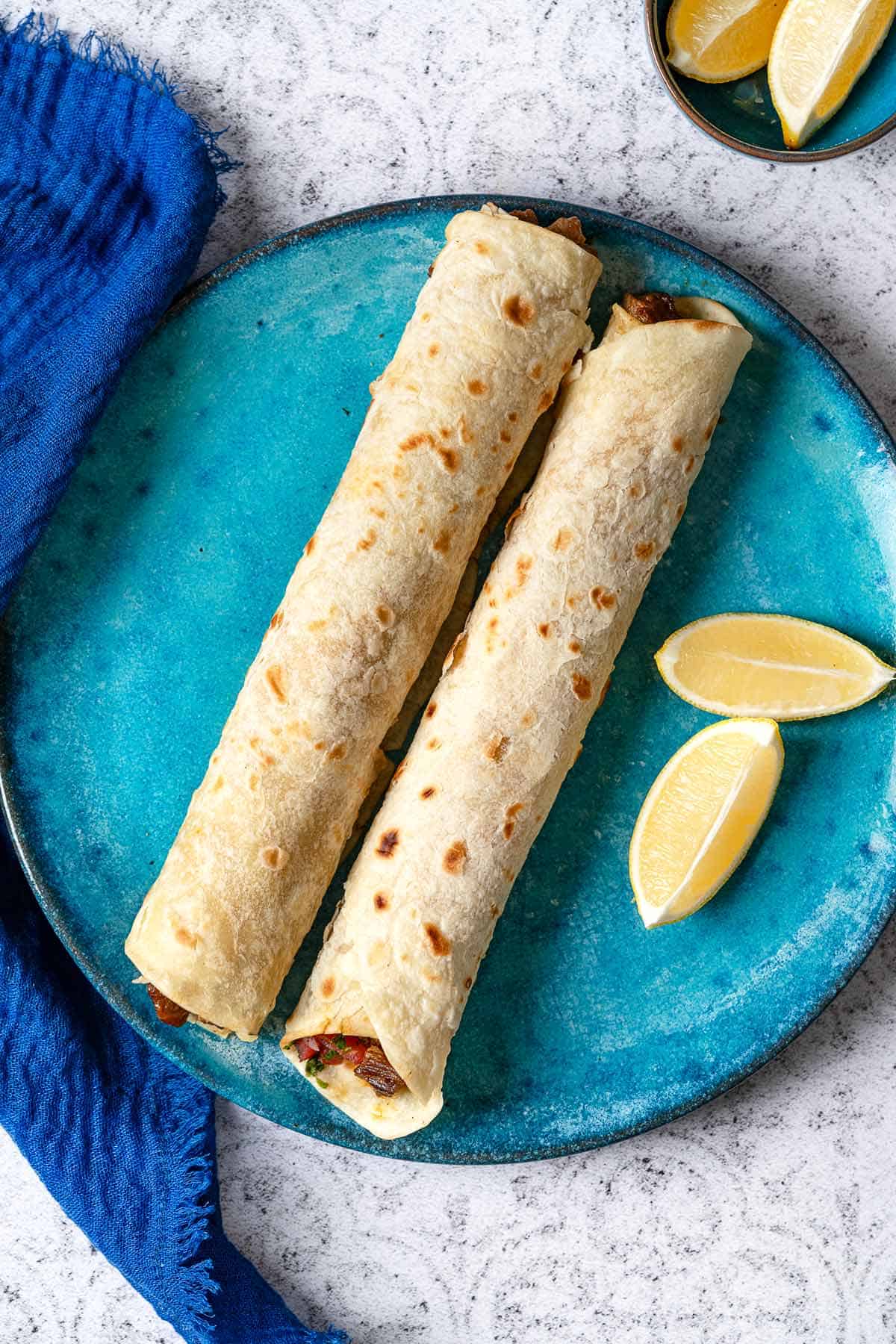
Tantuni-Inspired Steak Wraps
Lambs in Turkey look a bit different than they do in the U.S. They have a large bulbous tail which is filled with super flavorful fat. That lamb fat is what gives many recipes, perhaps most famously Adana kebab, a lot of rich flavor.
In typical street food fashion, tantuni is usually made with a cheaper cut of beef or lamb. It’s slow-simmered to tenderize, then fried in either lamb fat or cotton oil.
For this recipe, I’ve subbed in extra virgin olive oil and a cut of steak that doesn’t require such a long simmer. To be clear: it’s very much tantuni-inspired, and not a by-the-book traditional tantuni recipe.
The steak and oil have a very robust flavor on their own, but if you’d like to experience the extra richness of the traditional dish you can always fry the steak in rendered lamb fat or melt in a spoonful of ghee or butter in the final moments.
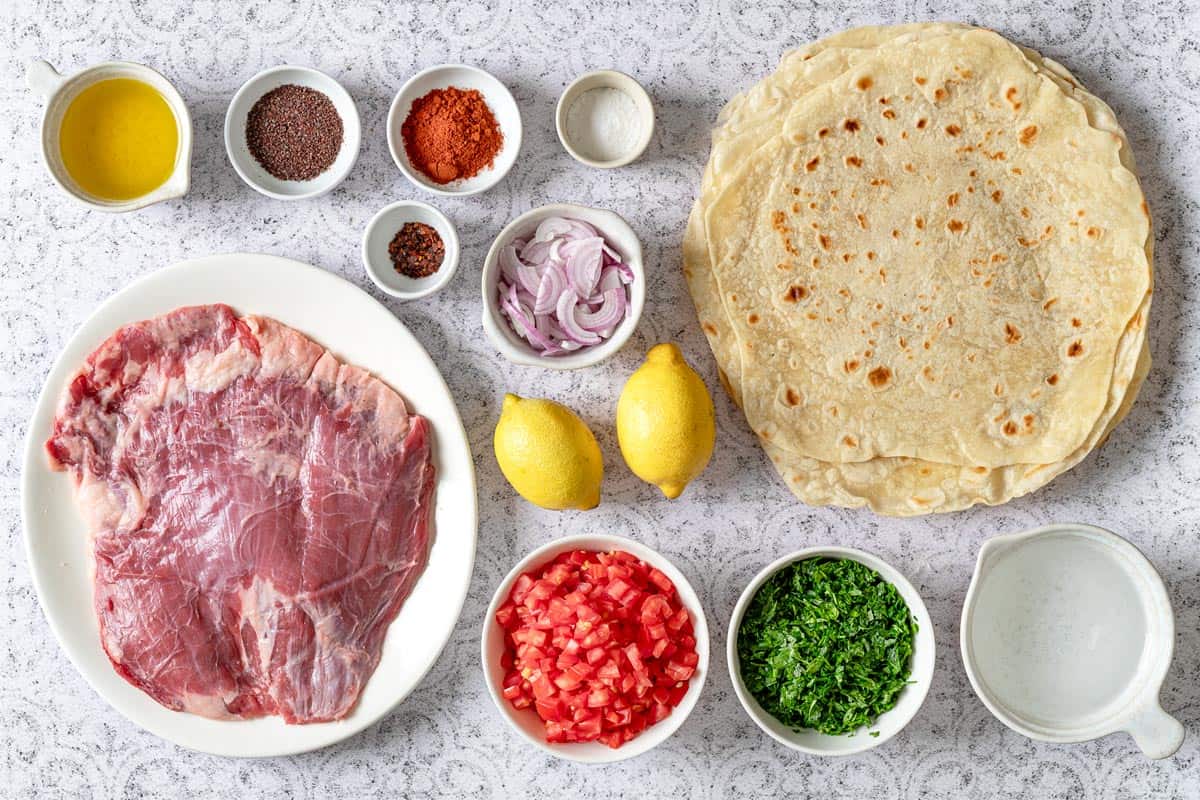
Ingredients for Tantuni Turkish Steak Wraps
I adapted this Turkish Tantuni recipe to use easy-to-find ingredients, along with a few Mediterranean pantry staples that are simple to source. You’ll need:
- Sumac: Often compared to lemon zest, but sumac massaged into onion has a very distinct flavor that I’d hate to mess with. The Mediterranean pantry staple has become more popular, so you can often find it at the grocery store. Or try this crimson red spice at our shop.
- Red onion: Adds a sweet and savory flavor to the tomato salad.
- Kosher salt: Enhances the flavor.
- Tomatoes: Roma is very close to what you find in Turkey so it’s usually my go-to for nostalgic recipes. That said, any small, sweet, and firm but ripe tomato works well here. Campari, early girl, and even cherry tomatoes all come to mind.
- Parsley: Fresh parsley balances the savory meat. Use flat leaf or Italian parsley if you can. It’s sweeter more delicate than curly parsley.
- Lemon: Fresh lemon juice makes the tomato salad, which is really like a Mediterranean-style salsa. The meat is pretty rich, so squeeze of lemon juice as you go is a must!
- Aleppo pepper (optional): Adds a super mild spice without overpowering. You can leave it off if you’d like, but I recommend you give it a try. You can also substitute with red pepper flakes, ground black pepper, or stock up at our shop.
- Steak: The steak is chopped into very small pieces which cook in their own juices, so a lean cut is best. You can splurge on a nicer steak if you’d like but it really doesn’t need to be too fancy. I would save the really good stuff for grilled steak or shish kebab. Flank steak, top sirloin, or even substituting with lamb leg works well.
- Extra virgin olive oil: This is a lighter replacement for the lamb fat that’s typically used, so having a full-flavor, smooth olive oil is essential. I mean this very genuinely: I’m consistently impressed by the flavor and quality of the olive oils Suzy sources for our shop. That said, a good extra virgin variety you have on hand will do.
- Paprika: Paprika is the main seasoning for the meat, and provides a lot of flavor for the quick pan gravy. I like sweet Spanish paprika for this recipe, but if you love smoky you can experiment with a smoked variety.
- Bread: Homemade lavash is the winner, but check out the “best bread” section below for alternatives.
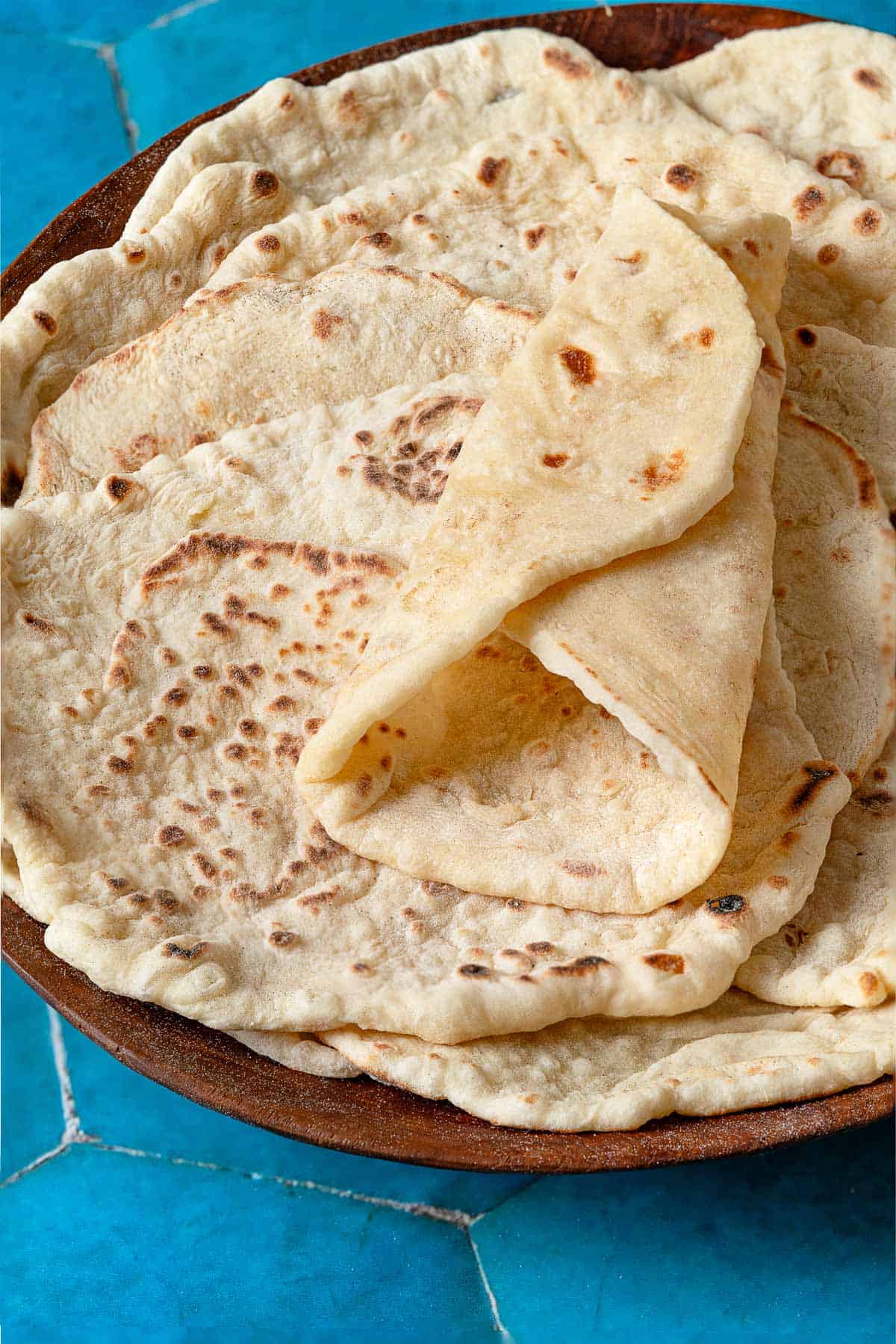
Best Bread for Tantuni Steak Wraps
Homemade lavash is the best bread for tantuni. The fresh bread is worth the extra effort: It stays softer and flexible. It’s also surprisingly quick and easy to make. And, it’s a good skill to have when you’re craving fresh bread but don’t want to run to the store—you likely have everything you need on-hand.
Finding a good store-bought alternative really put me through the wringer. I have tried many, many brands from all over the Eastern Mediterranean. The most flexible I’ve found is, surprisingly, not the more authentic-seeming lavash breads at Middle Eastern markets.
Rather, the all-natural, Whole Foods-ey lavash tends to be much softer and easier to work with. It is thicker than the traditional bread that’s used, but the bread in street food tantuni is often double-layered to prevent breaking so it all nets out to be about the same. A sprinkle or brush of water and a quick zap in the microwave also helps.
Alternatively, burrito-size flour tortillas work very well. It’s not traditional but there is no denying that it’s delicious and perfect for a busy weeknight.
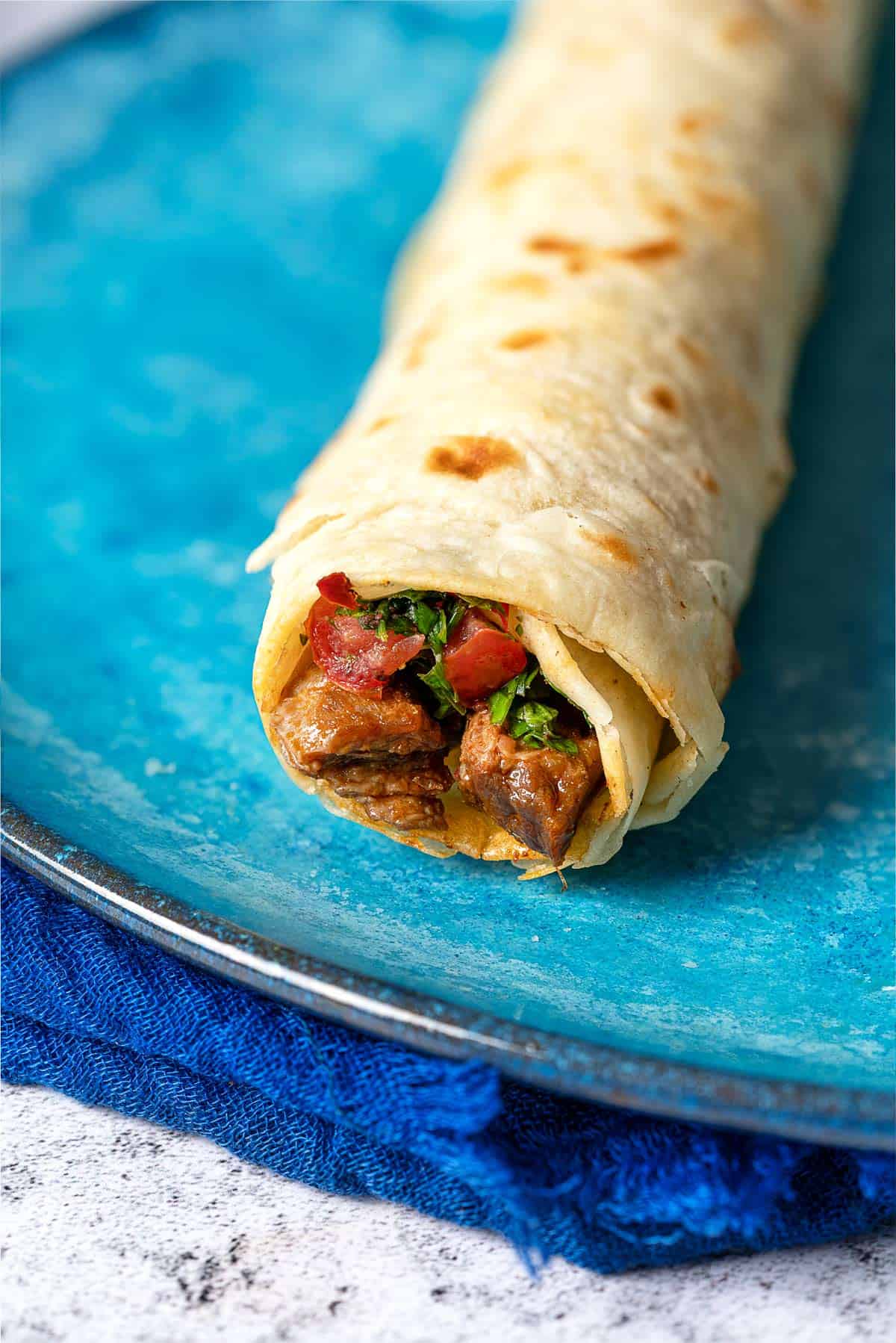
How to Make Tantuni
To make tantuni, you first prepare the tomato parsley salad. As it rests and the ingredients get to know each other, you quickly cook the steak.
- Make the sumac onions. Into a small mixing bowl, add the onion, sumac and a small pinch of salt. Use your hands to massage the seasoning into the onions, softening them and working in the flavor.
- Make the tomato and onion salad. Stir in the tomatoes, parsley, 1/2 teaspoon of the Aleppo pepper (if using), and more salt to taste. Juice in one lemon and toss, then slice the remaining lemon into wedges. Set the salad and lemon wedges aside while you cook the steak.
- Sear the steak. Trim the steak of any fat and slice into small pieces, each about the size of a sugar cube. Add the olive oil to a medium pan over medium-high heat. When the oil is shimmering (but before it starts to smoke), add the steak pieces. Stir until they expell and reabsorb their water and become golden, about 8 minutes.
- Finish the steak. Season the steak with the paprika, remaining 1/2 teaspoon Aleppo pepper (if using), and a large pinch of salt (about 1 teaspoon). Stir to coat, then add the water. Turn the heat to medium and allow the mixture to simmer for 5 minutes or so to slightly reduce.
- Soak the lavash. Turn the heat to low and top the pan with a piece of lavash. Carefully press with your hands or a spatula to encourage the bread to soak up the juice and soften from the steam. Be patient here—give the bread at least 30 seconds to soak in the flavor. The bread should be a nice golden hue.
- Build the wrap. Use tongs to transfer the lavash to your serving plate with the soaked side facing up. Spoon the meat in one line near the edge of the bread, and spoon a little juice from the pan over top. Add a line of the tomato and onion salad.
- Roll. Roll the lavash over the steak and salad, pulling towards you and rolling from top to bottom to make a long, extra skinny burrito or tube. Gently bend into a U-shape. Enjoy from both sides, squeezing fresh lemon juice into the top opening as you go. Your final bite will be the base of the U where all the delicious juices have pooled. This is tricky! If your lavash starts to break, simply enjoy it more like a standard wrap. Repeat the filing and rolling with the remaining lavash bread, enjoying the tantuni while it’s hot and fresh.
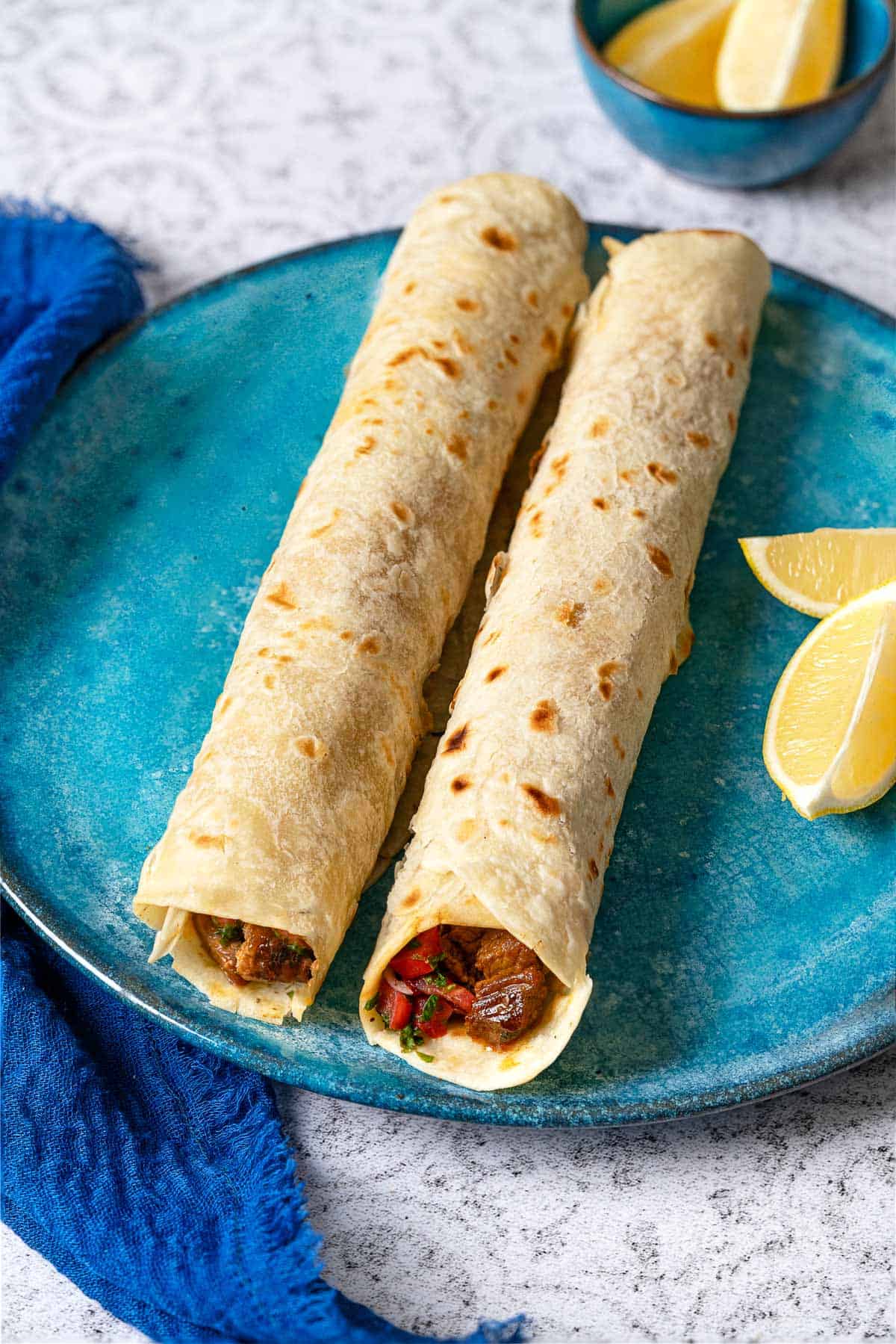
What to Serve with Tantuni
Like any good street food, from Turkish gözleme to pide, Tantuni is a whole meal in one convenient package.
- Keep it traditional (-ish) and serve with cold glasses of tangy Ayran, a salted yogurt drink, to lift the richness.
- Spicy pickles, like our Middle Eastern-style pickled turnips, Italian Giardiniera, or store bought pickled Guindilla peppers are delicious on the side.
You’ll Also Like: Mediterranean Street Foods To Try
Middle Eastern
Shish Kabob
Middle Eastern
Homemade Beef Shawarma
Middle Eastern
Kofta-Seasoned Ground Beef Pita Sandwich
Egyptian
Homemade Egyptian Hawawshi
Browse all Mediterranean recipes.
Visit Our Shop
Bundle and Save!
Stock your spice drawer with Mediterranean pantry essentials.
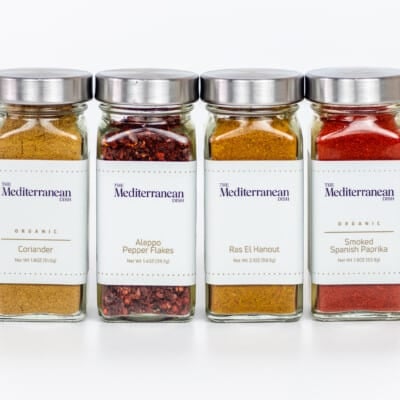
Tantuni (Turkish Steak Wraps)

Ingredients
- 1 small red onion, thinly sliced into half moons
- 2 teaspoons sumac
- Kosher salt
- 3 Roma tomatoes, finely chopped
- 1 bunch flat leaf parsley, finely chopped
- 2 lemons
- 1 teaspoon Aleppo pepper (optional)
- 1 1/2 pounds flank steak
- 1/4 cup extra virgin olive oil
- 2 teaspoons paprika
- 3/4 cup hot water
- 6 sheets of homemade lavash (or substitute with burrito-size flour tortillas, see note)
Instructions
- Make the sumac onions. Into a medium mixing bowl, add the onion, sumac, and a small pinch of salt. Use your hands to massage the seasoning into the onions, softening them and working in the flavor.
- Add more to the onions. Into the bowl with the onions, add the tomatoes, parsley, 1/2 teaspoon of the Aleppo pepper (if using), and more salt to taste. Juice in one lemon. Toss the ingredients together to combine, then slice the remaining lemon into wedges. Set the salad and lemon wedges aside while you cook the steak.
- Sear the steak. Trim the steak of any fat and slice into small pieces, each about the size of a sugar cube. Add the olive oil to a medium pan over medium-high heat. When the oil is shimmering (but before it starts to smoke), add the steak pieces. Stir until they expel and reabsorb their water and become golden, about 8 minutes.
- Finish the steak. Season the steak with the paprika, remaining 1/2 teaspoon Aleppo pepper (if using), and a large pinch of salt (about 1 teaspoon). Stir to coat, then add the water. Turn the heat to medium and allow the mixture to simmer for 5 minutes or so to slightly reduce.
- Soak the lavash. Turn the heat to low, keep the meat in the pan, and cover it with a piece of lavash. Carefully press with your hands or a spatula to encourage the bread to soak up the juice and soften from the steam. Be patient here—give the bread at least 30 seconds to soak in the flavor. The bread should be a nice golden hue.
- Build the wrap. Use tongs to transfer the lavash to your serving plate with the soaked side facing up. Spoon the meat in one thin line near the edge of the bread and spoon a little gravy from the pan over top. Add a line of the tomato and onion salad. Be careful not to overfill it.
- Roll and enjoy. Roll the lavash over the steak and salad, pulling towards you and rolling from top to bottom to make a long, extra skinny burrito or tube. Gently bend into a U-shape. Enjoy from both sides, squeezing fresh lemon juice into the top opening as you go. Your final bite will be the base of the U where all the delicious juices have pooled. Note: Depending on your lavash bread, the U-shape can be tricky! If your lavash starts to break, simply enjoy it more like a standard wrap or wrap it like a burrito.
- Repeat. Repeat the filing and rolling with the remaining lavash bread, enjoying the tantuni while it’s hot and fresh.
Notes
- Store bought lavash tends to be brittle and dry. I’ve found tortillas to be the best substitute for this recipe. That said, if you’d like to use a store-bought lavash, look for the softer versions that are on the thicker side. Sprinkle them with water and gently heat to soften.
- Give the bread plenty of time to soak in the gravy. This is what makes tantuni so special! Press down and be patient as it soaks in the flavor.
- Visit our shop to browse quality Mediterranean ingredients including olive oils, honey, jams, and spices.



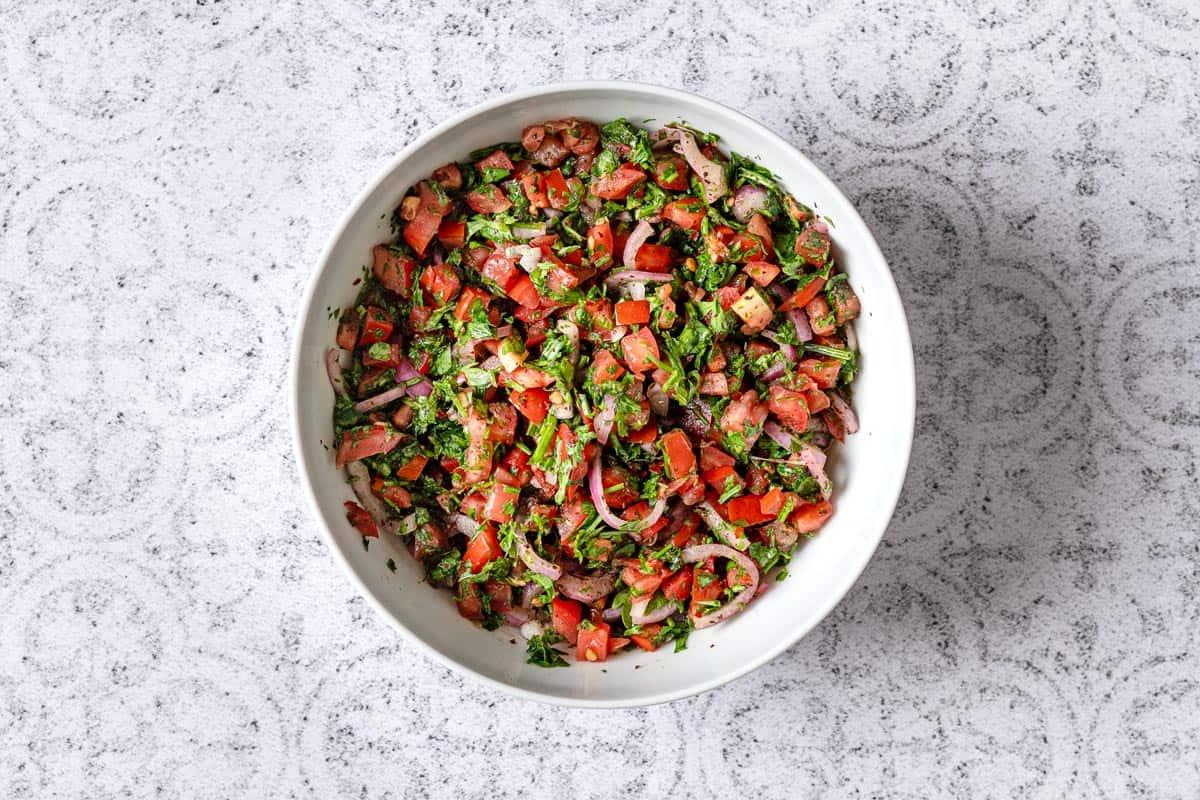
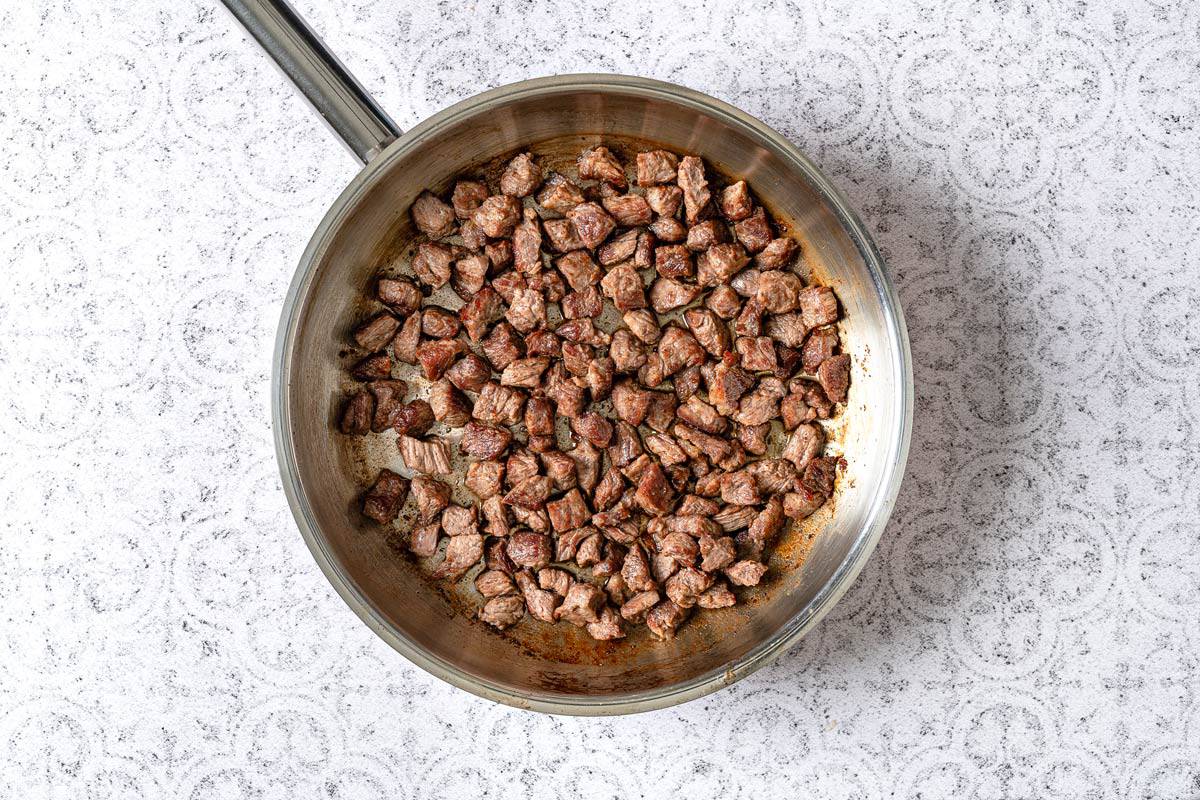
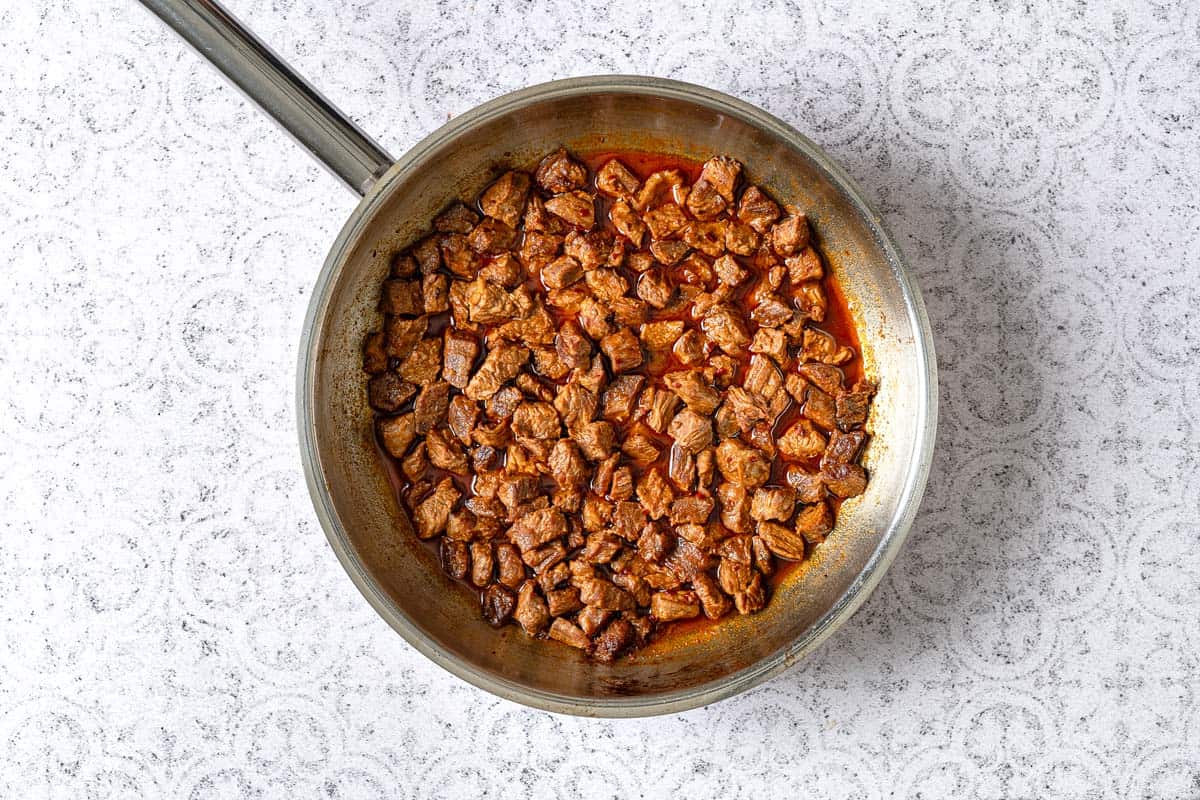
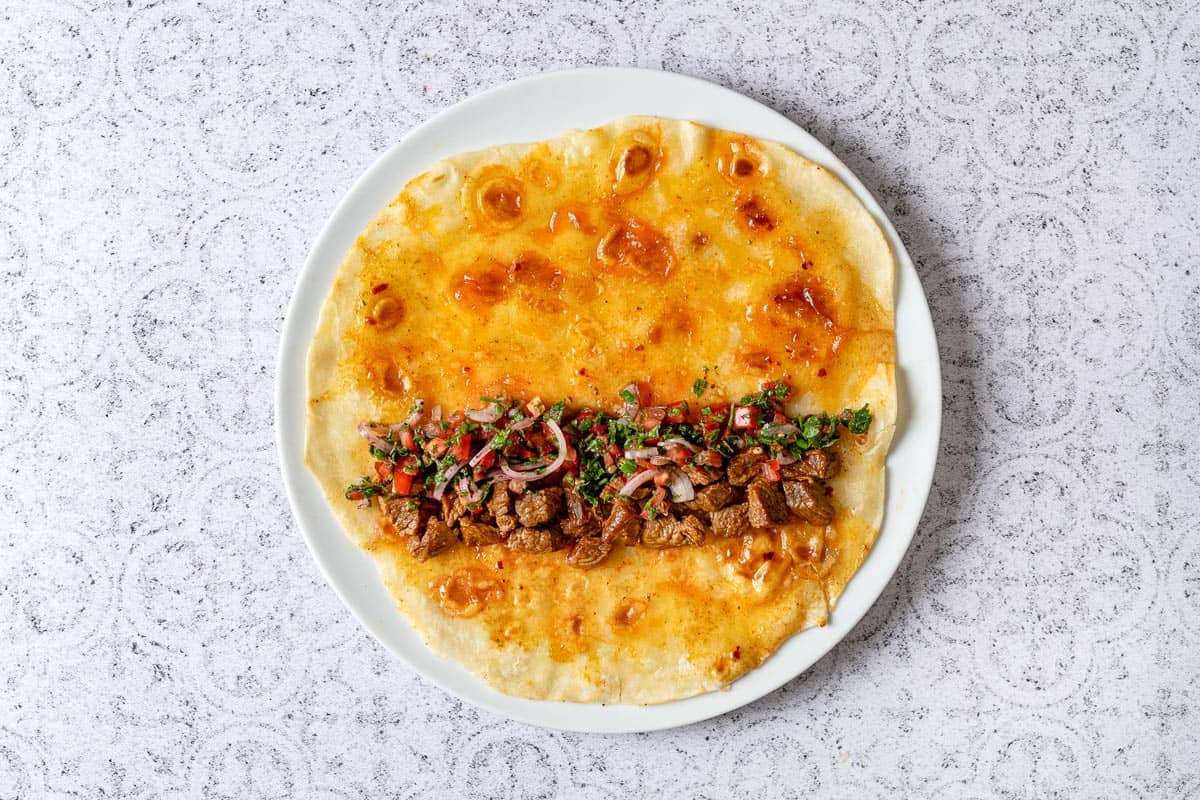
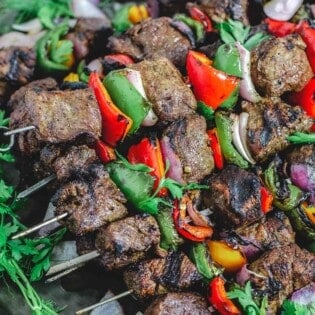

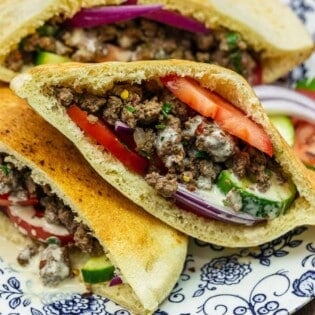

Great dish. Easy to make and I really like the new spice Sumac I just purchased
Highly recommended
Such a small world! I lived in Tarsus for 8 years and love ayran and tantuni!!! I can’t wait try out some of these recipes. Afiyet olsun!
Great mess of awesome. The flavors go together sooo well. With homemade lavash you are in for a treat.
“Great mess of awesome”… LOVE that!! 🙂
Do you skip soaking if using tortillas instead of lavash bread?
Yes… even with tortillas, you’ll still want to sprinkle them with water.
Another wonderful recipe. My son (kinda picky) and husband said put those in the rotation.
Wonderful! Thanks, Laura!
Made this for lunch. I will be making this regularly here on. REALLY GOOD. The flavors just all go together so well.
Hi Dan, so happy to hear you liked it! This made my day, thank you for the comment!